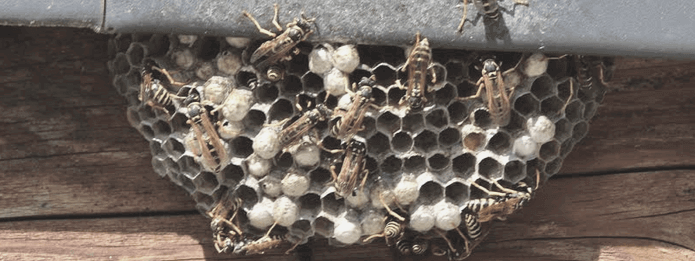Can Wasps Nest in Your Home Over Winter?

Wasps seem to be an almost constant enemy during the warm summer months. When they’re not disrupting barbeques in the yard and terrorizing small children that are playing, they’re ruining picnics in public parks and constantly irritating us. We’re glad when winter arrives and these annoying insects disappear for a few months, right?
Sadly, that isn’t always the case. Certain wasps can nest in your home over winter and if you’re not careful, your ignorance could be the reason that they appear in spring with huge numbers. In this article, we’re going to look at how wasps can nest in your home over winter. We’ll look at why they do that and how Truly Nolen can help with any residential pest control issues you might have.
How Do Pests Survive Winter?
In the fall, many worker wasps will begin to die off. Their bodies aren’t designed to handle cold temperatures and realistically, they aren’t expected to survive. Worker wasps will help to build the nest, support new larvae and gather the food that’s required. As soon as the days start getting shorter, they aren’t needed anymore.
Unlike worker wasps, young female wasps which have recently mated will suddenly become very important. Their job is to find a place to survive over winter and re-emerge in spring, ready to start another colony. Those female wasps will listen to their internal clocks and understand that when the temperatures plummet, they need to find a safe, warm place to hide. They’ll go on to be queen wasps of their next nest: it’s essential that they see spring.
Unfortunately, their safe place could be your home. If you’ve left any cracks or crevices in your roofing or walls, these female wasps, desperately looking for a safe shelter, won’t waste any time in using them. They’ll be more than happy to work their way into your attic and protect themselves from the harsh elements outdoors. If you’re really unlucky, you won’t hear or see them hiding until it’s too late. Those future queen wasps will enter a form of hibernation known as diapause where they are sluggish and conserve their energy.
Types of Wasps You Can Find
It’s almost certain that the type of wasp that made its way inside your home is a paper wasp. These wasps are famous for sneaking inside the homes of unsuspecting residents when the temperatures drop.
If a considerable number of these wasps happen to make their way inside your home, then you could be in trouble. While one or two small wasps won’t cause much damage to the structure of your home, several hundred certainly could. They can damage the insulation in your attic and interfere with the structure of your walls. Once the warmer temperatures return, those queen wasps will be desperate to get outdoors and start making nests all over your property. That’s when you could find yourself with a very serious wasp infestation.
Truly Nolen Can Remove Unwanted Guests
Save yourself all this trouble by calling our friendly Truly Nolen team today. We’ve been dealing with residential pest control issues since 1938 and there’s nothing we haven’t seen before. If you spot one or two wasps buzzing around upstairs, our experienced technicians will know exactly where to look inside your home.
Once we’ve established the residential pest control issue, we’ll quickly design a plan to remove them. They’ll be safely extinguished, you’ll be able to inspect your home for any structural damage and we’ll identify any potential entrance and exit points that those insects used. Before we leave we’ll make sure that those access points are sealed and that you can enjoy your winter without worrying about any wasps.